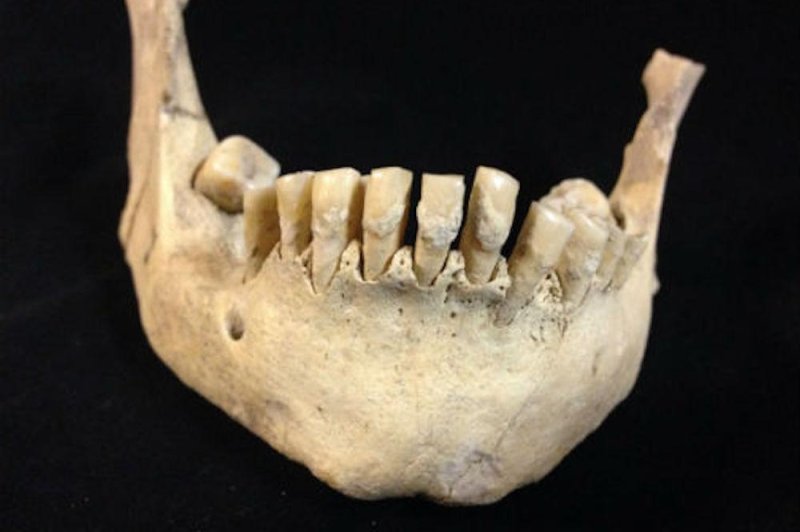Scientists found milk proteins in dental plaque collected from 6,000-year-old teeth. The fossil teeth, hailing from three different Neolithic dig sites and housed at the Dorset County Museum, belonged to Britain's earliest farmers. Photo by the University of York
Sept. 11 (UPI) -- Scientists have found beta lactoglobulin, milk protein, trapped in the dental plaque on 6,000-year-old teeth of prehistoric British farmers -- the earliest direct evidence of milk consumption.
Researchers at the University of York analyzed teeth from three different Neolithic sites in England. The teeth of individuals from all three sites revealed the presence of beta lactoglobulin, or BLG.
The research team shared their findings this week in the journal Archaeological and Anthropological Sciences.
"The fact that we found this protein in the dental calculus of individuals from three different Neolithic sites may suggest that dairy consumption was a widespread dietary practice in the past," Sophy Charlton, York archaeologist and lead study author, said in a news release.
Between 4,000 and 2,400 B.C., farmers settled across Britain, ushering in the Neolithic period. As previous genetic surveys have revealed, Britain's earliest Neolithic farmers were descendants of Anatolian migrants who had made their way across the Mediterranean.
In addition to planting wheat and barley, Britain's earliest farmers raised cows, sheep, pigs and goats. They also developed sophisticated cultural practices, including the construction of monuments, including Stonehenge.
While the latest research suggests these early farmers were consuming milk products, genetic studies suggest early Neolithic populations were without the ability to digest lactose. The farmers may have consumed only small amounts of milk or turned milk into cheese products, which removes most of the lactose.
Researchers aren't sure when and how European populations acquired the genetic mutation that allowed for continued milk consumption.
"Identifying more ancient individuals with evidence of BLG in the future may provide further insights into milk consumption and processing in the past, and increase our understanding of how genetics and culture have interacted to produce lactase persistence," Charlton said.
Though scientists found evidence of milk consumption in multiple adults from multiple locations, researchers hope additional surveys could reveal more detailed patterns about who was eating and drinking milk-based foodstuffs.
"Perhaps the amount of dairy products consumed or the animals utilised varied along the lines of sex, gender, age or social standing," Charlton said.















